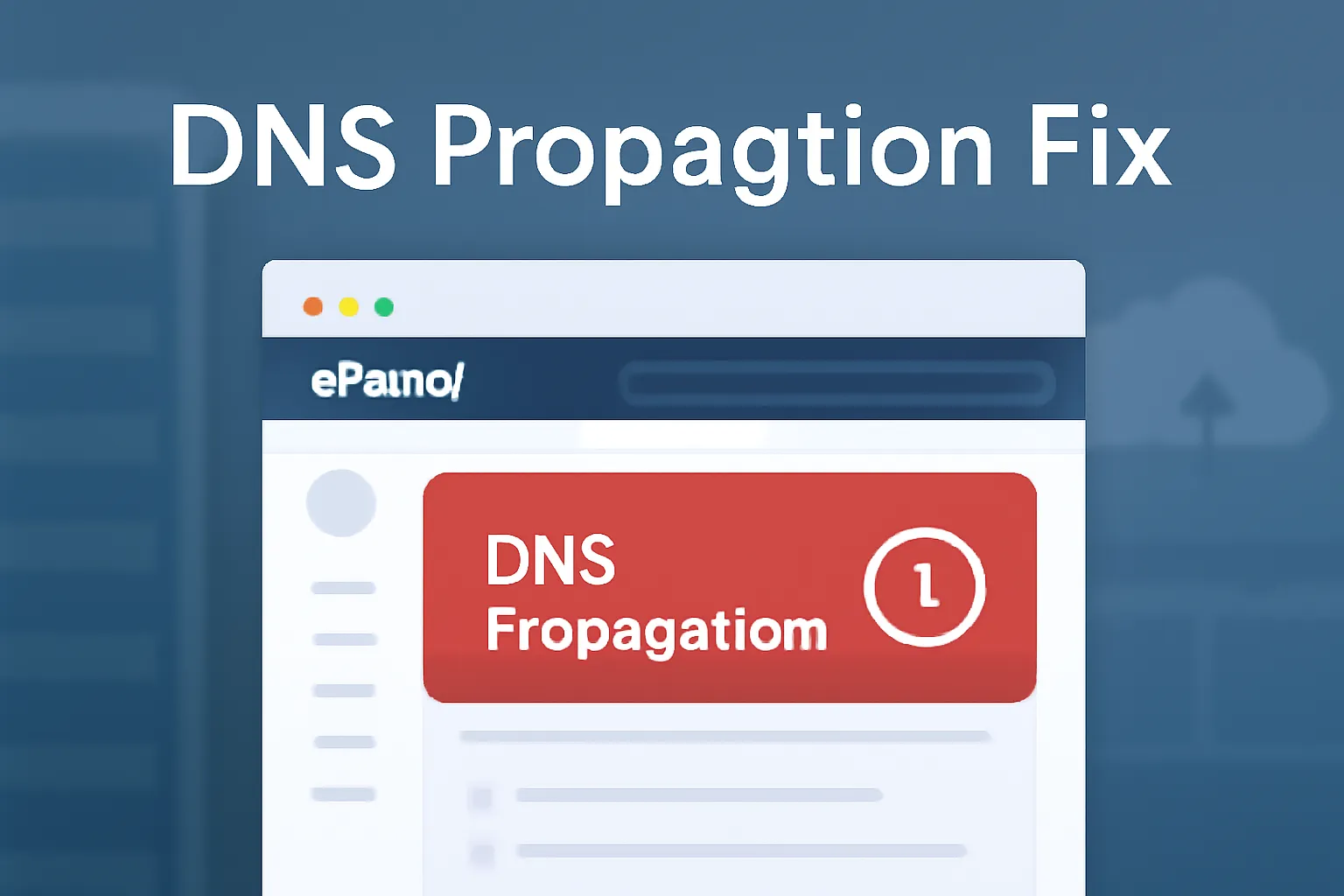What is DNS Propagation?
When you register a new domain or make changes to an existing domain’s DNS settings (such as changing nameservers or updating A records), the changes don’t take effect immediately. This delay is called DNS propagation. It can take anywhere from a few minutes to 48 hours (and in some rare cases, longer) for the changes to propagate across all DNS servers worldwide.
Common Issues with DNS Propagation
- DNS Cache Stale Data
Local DNS servers or browsers may cache DNS records, causing them to display outdated information even after you’ve made changes. - DNS Not Updating Globally
While changes are often visible in some parts of the world quickly, others may still see old DNS data due to regional DNS servers not receiving the updated records. - Incorrect DNS Records
Typing errors or misconfigured DNS records, such as incorrect A, CNAME, or MX records, can cause DNS propagation issues. - Nameserver Configuration Delays
If you change nameservers (e.g., when switching hosts), it can take longer for the update to propagate. Additionally, if the nameservers are incorrect or not pointing to the correct location, it can cause issues during propagation.
How Long Does DNS Propagation Take?
DNS propagation can take anywhere from a few minutes to up to 48 hours. However, in most cases, it should be completed within a few hours. During this time, some users may see the old DNS information, while others will get the updated one. The duration depends on:
- TTL (Time to Live) settings in DNS records
- DNS server cache refresh rates
- The global distribution of DNS servers
- The type of DNS records being updated
Solutions to Troubleshoot DNS Propagation Issues
1. Clear DNS Cache
Clear your browser’s cache and flush the DNS cache on your local machine to ensure that you’re seeing the most up-to-date information.
To clear your DNS cache on Windows:
ipconfig /flushdns
On macOS:
sudo killall -HUP mDNSResponder
On Linux:
sudo systemd-resolve --flush-caches
2. Check DNS Records
Double-check the DNS records you’ve set. Ensure that:
- Nameservers are pointing to the correct DNS host.
- A records are pointing to the correct IP address.
- MX records are correct for mail servers.
3. Use DNS Propagation Tools
Use online tools like DNS Checker or Name.af Tools to track DNS propagation across different locations worldwide. These tools allow you to check if your DNS changes have fully propagated or if some DNS servers are still using the old information.
4. Wait for Full Propagation
Sometimes, DNS propagation can take up to 48 hours, depending on the TTL (Time to Live) value set on your domain. If the DNS update is still not visible after this period, recheck your DNS records or contact your DNS provider.
5. Verify Your Nameserver Settings
If you changed the nameservers, make sure they are correctly configured at your domain registrar. The nameservers should match the ones provided by your hosting provider.
6. Check for DNSSEC (DNS Security Extensions) Issues
If your domain uses DNSSEC, ensure that the DNSSEC settings are correctly configured. Misconfigured DNSSEC can prevent DNS propagation or cause errors.
Troubleshooting Common DNS Propagation Issues
1. Domain Not Resolving
- Solution: Check if the domain’s DNS is correctly configured (use DNS Checker) and confirm the domain has the right nameservers.
2. Mail Server Not Working After DNS Update
- Solution: Double-check your MX records. Ensure that your email settings are correct, and DNS has fully propagated for mail services.
3. Website Not Appearing
- Solution: Make sure the A record is correct, and the TTL has been reduced before making the update. You can also use Pingdom to check if the website resolves to the right IP.
Best Practices to Prevent DNS Propagation Issues
- Lower TTL Before Updating DNS Records
- Set a low TTL (e.g., 300 seconds) before making major DNS changes. This speeds up the propagation process and minimizes downtime.
- Avoid Frequent DNS Changes
- Frequent changes to DNS settings can confuse DNS servers and extend propagation times.
- Use Reliable DNS Providers
- Choose reliable DNS providers like Cloudflare or Google DNS, which often provide faster propagation times and better stability.
- Communicate with Your Users
- If you’re migrating a domain or changing DNS records, inform your users in advance that DNS changes may take time to propagate.
Still Stuck ?
